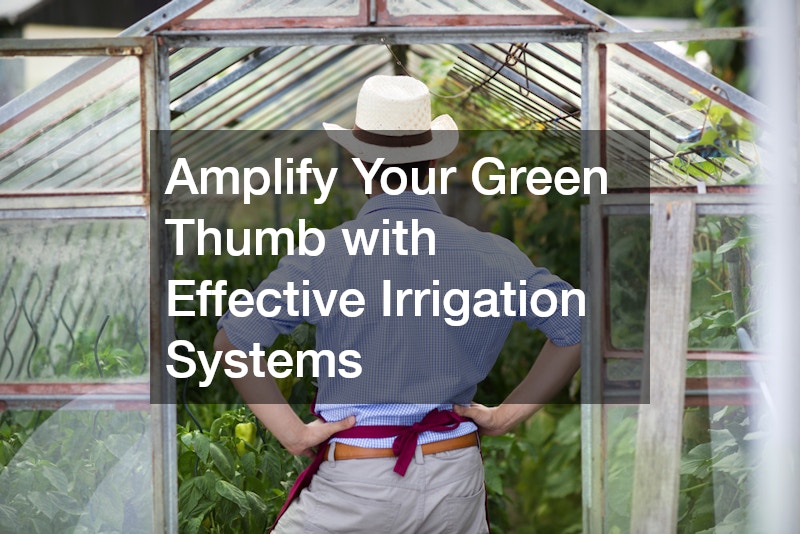Explore how efficient irrigation systems can transform your gardening experience and help you cultivate a thriving garden with minimal effort. Efficient techniques are essential not only for conserving water but also for achieving lush, healthy plants that require less manual labor. By implementing the right systems, gardeners can attain a harmonious balance between plant care and sustainability, ultimately enriching the overall gardening experience.
What Are the Different Types Systems?
Understanding Various Systems for Optimal Watering
Learn about the different types of irrigation systems available, including drip irrigation, sprinkler systems, and surface irrigation, and understand which is best suited for your garden’s needs. Drip systems deliver water directly to the root zone of each plant, significantly reducing water waste and promoting optimal plant growth. In contrast, sprinkler systems mimic natural rainfall and are effective in covering large garden areas uniformly, making them a popular choice among many gardeners.
Additionally, surface irrigation relies on gravity to distribute water across a landscape, usually through a series of channels, and is often used in larger agricultural settings. Each type of system offers its advantages and is suited to different garden needs, whether you prioritize precision, coverage, or simplicity. For those seeking an eco-friendly approach, drip irrigation stands out due to its ability to significantly reduce water usage by delivering the water directly to where it’s most needed.
On the other hand, sprinkler systems can be more efficient in larger areas with diverse plant types, while surface systems work well in areas with minimal water pressure. Choosing the right system involves understanding your garden’s layout, water availability, and the specific needs of your plants, ensuring you achieve the best results with minimal environmental impact.
How to Choose the Right System for Your Garden?
Factors to Consider When Selecting an Irrigation System
Discover the key factors to consider, such as garden size, plant types, climate, and water availability, ensuring you select the most effective system for your gardening requirements. Garden size plays a crucial role in determining which system will be most effective, with larger gardens often benefiting from systems designed for wider coverage, such as sprinklers. Plant types also influence the decision; for instance, some plants with delicate foliage may thrive better with drip irrigation that prevents leaf wetting.
Climate is another vital factor, with areas receiving frequent rain requiring systems that can be easily adjusted or turned off to avoid overwatering. Water availability and local restrictions must also be accounted for, particularly in drought-prone regions where water conservation is essential, making efficient options like drip systems incredibly valuable. Considering these factors collectively ensures that the system not only meets the immediate needs of the garden but also aligns with broader sustainability goals.
Additionally, the soil type in your garden should also be factored into your decision, as it influences how water is absorbed and retained. For example, sandy soils require more frequent watering, while clay soils hold moisture longer, meaning irrigation systems may need to be adjusted to accommodate these differences.
What Are the Benefits of Using Efficient Systems?
Maximizing Growth and Sustainability with Proper Irrigation
Explore the numerous advantages of using efficient irrigation systems, including water conservation, improved plant health, and reduced labor, leading to a more sustainable gardening practice. Efficient systems, such as drip, are specifically designed to lessen water waste by delivering it right where it is needed, reducing evaporation and runoff dramatically. This conservation effort translates into lower water bills and a reduced environmental footprint, making sustainable gardening accessible to all.
In addition to saving water, efficient methods enhance plant health by ensuring that the appropriate amount of water reaches each plant, preventing issues like root rot or drought stress. By adopting these systems, gardeners can expect healthier, more productive plants with increased resistance to diseases and pests. Furthermore, automating the watering process alleviates the manual labor typically associated with garden maintenance, allowing gardeners more time to enjoy the fruits of their efforts.
Summarize how adopting the right system strategies enhances your gardening experience, making it more productive and environmentally friendly. Efficient systems empower gardeners to harmonize with nature, making significant impacts in water conservation and plant health with minimal effort. Encourage readers to consider their specific garden’s needs when implementing irrigation solutions, thus forging a path toward more sustainable, enjoyable gardening practices.
.




